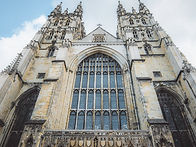
Bryan Nie

The Impacts of the Oregon Trail

"The Oregon Trail Trailblazer" by Jesse Wiley
Background
The Oregon-California trail was a 2,000 mile-long trail used in the westward expansion and was utilized between 1841 and 1869. The journey started in Independence, Missouri, went through Nebraska, Wyoming, and Idaho, and ended near present-day Portland, Oregon. Before the route, people would travel by ship around the southern tip of South America to get to California and Oregon, this trip on average would take about a year. Many people migrated west for the cheap land that was available, to escape depression, and to avoid the falling prices on food. There were also many people who helped and encouraged the growth of the trail, some people include Marcus Whitman, Nathaniel J. Wyeth, and many more.
Introduction
The Oregon Trail was created by over 350,000 settlers. The route served as the main way for hundreds of thousands of emigrants to get to the Northwest from the 1830s to the 1860s. The route had political, economic, social, religious, and geographic effects, and along with that, there were a lot of key people in the making of the trail.
.png)
"The Oregon Trail Trailblazer" by Jesse Wiley


"Go WEST, young man, and grow up with the country."
--- Horace Greeley, American Author



